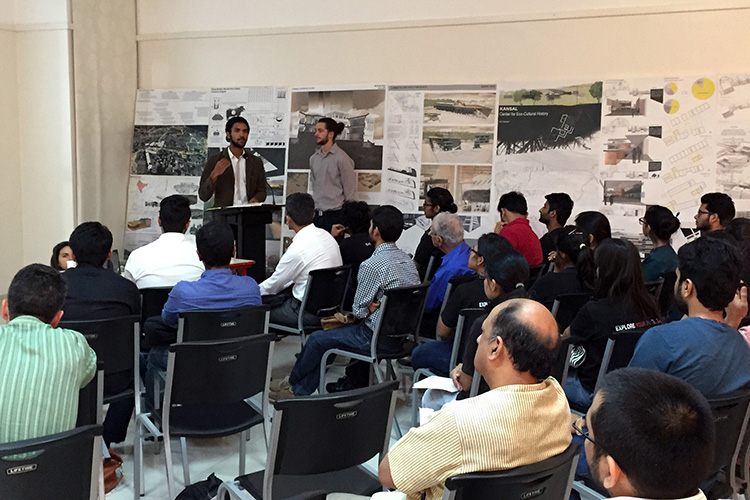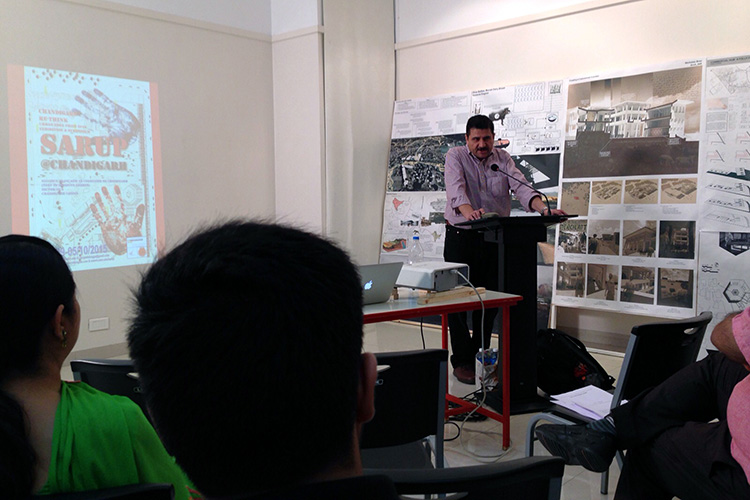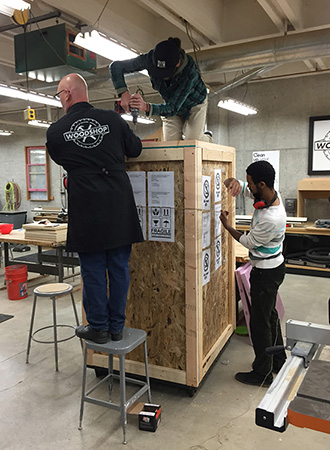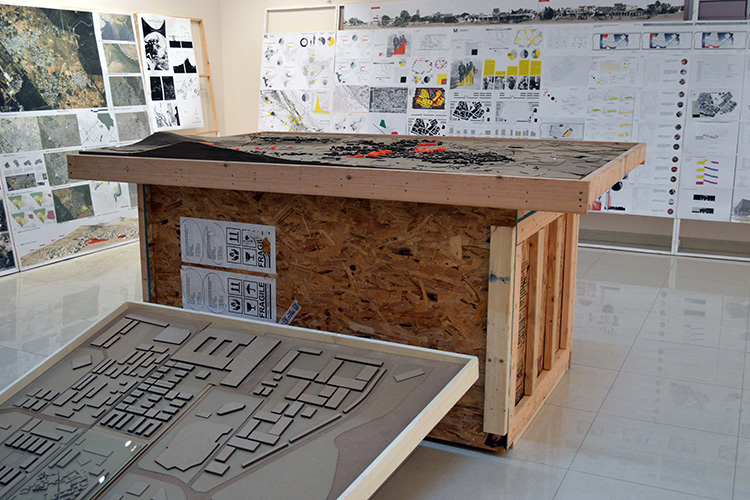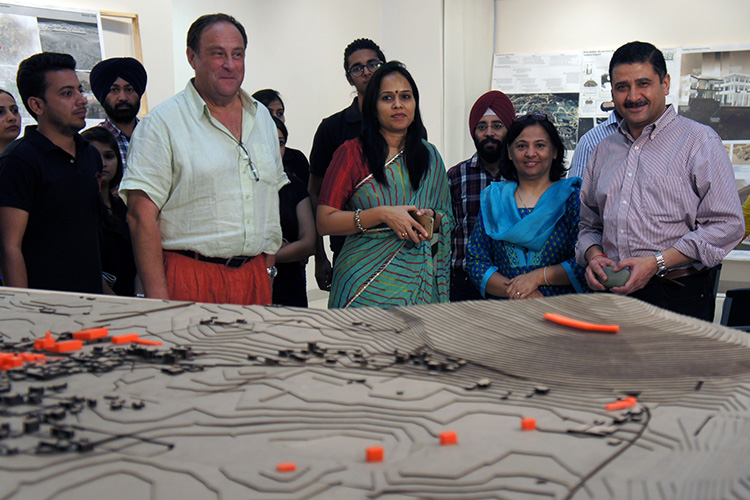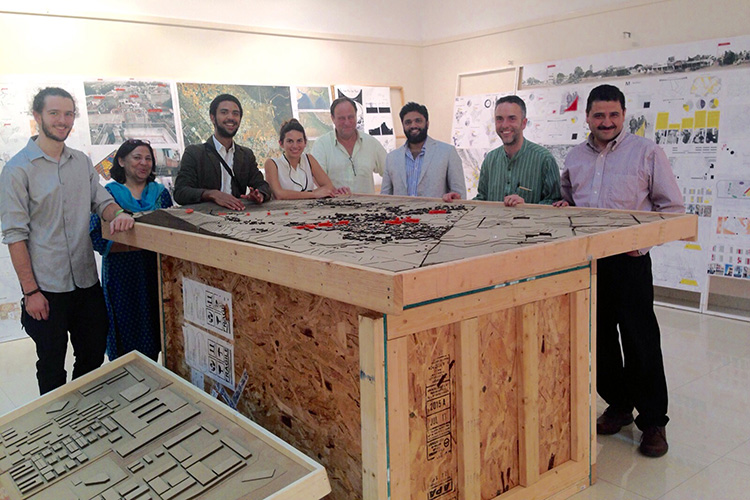How do you integrate a historic ‘cow path’ into a bustling and expanding modern city?
That’s one of the issues University of Wisconsin-Milwaukee architecture students looked at in their studies of the “urban edge” in Chandigarh, India’s first planned city.
Chandigarh – designed by renowned French architect Le Corbusier and built between 1955-1965 – is booming, but its sprawling growth threatens the traditions of existing historic villages in or near the city.
A dozen UWM students, led by Associate Professor of Architecture Manu P. Sobti, went to India in January 2015 to work with architecture students from Chandigarh College of Architecture, looking at the issues that have developed in the boundary areas between the bustling and very modern city and two pre-existing adjoining villages.
When the students returned to Milwaukee, they spent the spring 2015 semester in a studio working to build maps and models of these villages to help the local people make decisions on how rural ways of life can co-exist with the urban pressures typical of a thriving city.
Their design ideas were included in “Urban Edge 2015,” an exhibit in Chandigarh commemorating the 50th anniversary of Le Corbusier’s death. The exhibit ended in early October, but the models will remain on permanent display in the city’s museum. The School of Architecture and Urban Planning’s group were the only international presenters during the anniversary, according to Sobti. Their findings will be discussed at an upcoming international symposium, the “Urban Edge-Redux,” 1-5:30 p.m. Friday, Oct. 30, in the Architecture and Urban Planning Building, room 110. The concept of the “edge” will also be examined in The Urban Edge(s): Positions & Methods Seminar, 2-4 p.m. Oct. 15 in the Architecture and Urban Planning Building, room 345.
“We did come up with ideas, not really to help the village residents, but to essentially map what they do,” Sobti said. “No one had mapped the agricultural plots and the paths and the homes and how they all come together.” That’s why one student focused on mapping those easily missed ‘cow paths’ – where the animals had meandered through a maze of temple ponds and groves of trees for centuries.
The entire project, the Chandigarh symposium and fall seminars, all are funded through the prestigious biennial Urban Edge Award, which the School of Architecture and Urban Planning established in 2009. In previous years, the award had gone to individual architects. This year, Sobti, decided to try something different. He wanted to engage students and the community in looking at how global issues like suburbanization, sustainability and urban-rural divides express a country’s culture, and are playing out far from the U.S.
The challenge, said Sobti, is that areas at the edges and boundaries of cities often grow up separately from urban centers, without sustained direction or planning, and sometimes trampling a rural way of life in the process. Chandigarh, which has been nominated as a UNESCO World Heritage Site, was an excellent place to start.
When Le Corbusier (born Charles-Édouard Jeanneret-Gris) planned Chandigarh, he left about 20 existing nearby rural villages intact within the urban plan, hoping that they would somehow smoothly and naturally meld with the future plan of the new city. That’s not the way it worked out.
“What is happening is that there are ‘zones of contention,’ where new building types are emerging,” Sobti said. “Sometimes, it is beautiful; sometimes it is cataclysmic. It is sad to see that this space of reconciliation – this space of joining – has not really been dealt with.”
The spread of cities at the expense of villages is a growing trend all over India, according to Sobti. “It is particularly happening in the matrices of spaces between cities. India is building highways and some of these are going through the hearts of sleepy and idyllic villages. They are changing really fast in a really dismal way.”
Sobti designed the studio so that UWM students and their Indian colleagues could generate discussion about a different approach to planning for and around the edges of cities and their neighboring villages. While architects usually think in terms of cities, villages like those around Chandigarh deserve to be considered in their own right because they’ve been there longer than the city, Sobti said.
“We don’t want this to be merely an academic exercise, and these design propositions, mappings and models can be the basis for an urban project.”
